Dull but dry.
One day, I'll write down the story of the identification process for some of my specimens. Entolomas are a very difficult group, with over 350 species on the British (and hence potentially Irish) list. I used the Noordeloos key to European Entolomas to examine this one and after about four false starts, I eventually came up with a firm identification for Entoloma sarcitulum - a species that turns out not to be on the British (or Irish) list. A check on the synonyms list gave me another potential identification which checks out precisely: Entoloma longistriatum var. sarcitulum, which is the longest name of any species on the site so far. I should point out that the key for Entolomas runs to 17 pages.

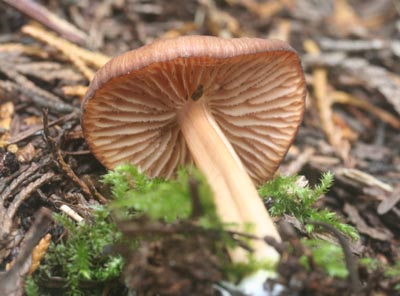
Just for the record, Entoloma longistriatum var. sarcitulum is described (in part) as follows:
"Pileus and stipe dull yellow brown; pileus hygrophanous, distinctly translucently striate when moist, at least at margin; stipe polished. Lamellae pallid with concolorous or brown edge; spores in average longer than 10Ám.
Pileus 5-35 mm broad, truncately conical or campanulate then conico or plano convex, with slightly depressed to distinctly umbilicate centre. Lamellae moderately distant, broadly to narrowly adnate, often slightly to deeply emarginate or with small decurrent tooth, white or cream, then pink, often with brown tinge when mature, with entire or slightly eroded, or concolourous (partly) brown edge. Stipe cylindrical, often compressed with groove, white tomentose at base."
Green indicates the match with my specimen.
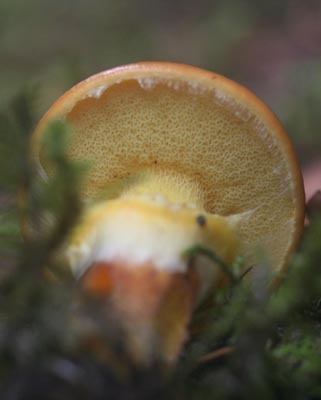
A very young and fresh Suillus grevillei - always associated with Larch.
Two very closely related species: Chanterelle (left) and Girolle (right). Both delicacies.
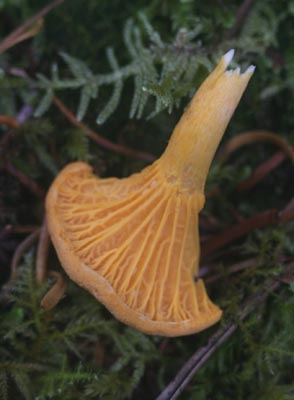
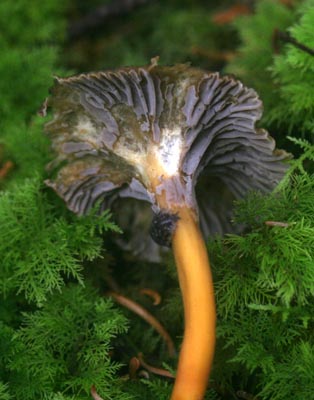
A fine little group of steel-grey Mycenas. Possibly Mycena atroalba.

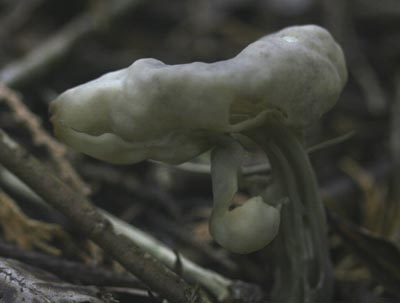
Helvella lacunosa is commonly called the Black Helvella. It's usually much more grey than the (admittely very rare, but very black) Helvella corium.
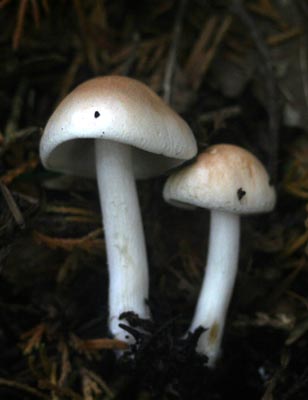
A Hebeloma, and just maybe Hebeloma longicaudum.

One particular path edge is covered in specimens of Clavulina cristata.

Heterobasidion annosum is a severe decomposer of coniferous stumps.
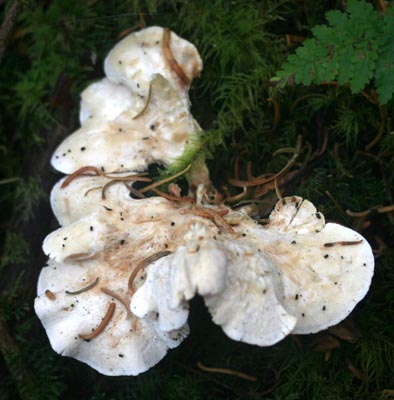
I found a few specimens of Hydnum repandum - the Hedgehog mushroom.
Hygrocybe nivea - the White Waxcap - is popping up on ditch walls, grass and verges at the moment.
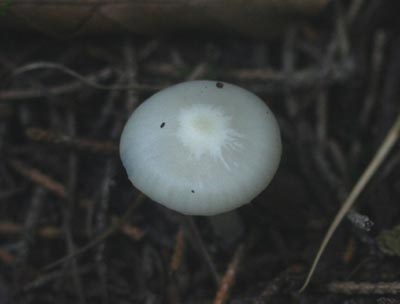
A portrait of two tiny specimens of Marasmius ramealis on the tip of a dead twig. Caps about 8mm. diameter.
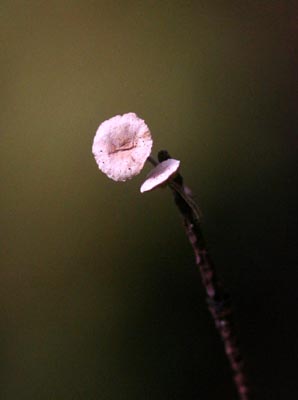

Russula cyoxanthum - the Charcoal Burner - is much more intensely coloured when young. This is a common feature of fungi and relates to a fixed amount of pigment that is spread over a larger area as the fungus expands with age.
An extraordinarily rare fungus: Phellodon melaleucus. This has an intense odour of Fenugreek when dried.

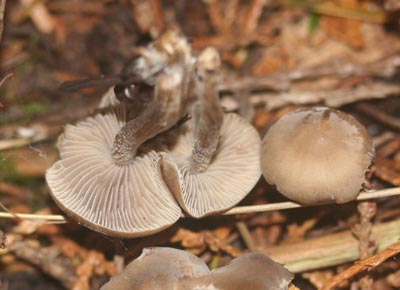
Finally, a little clay-coloured mushroom that defied identification attempts. MAYBE an Inocybe.